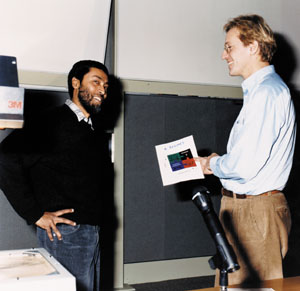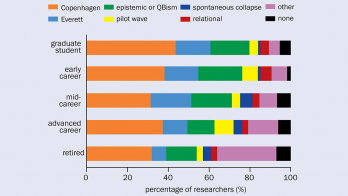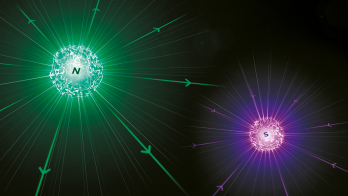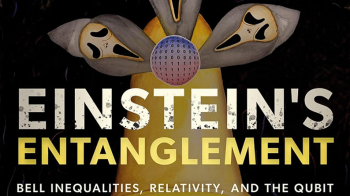
The traditional annual UK theory meeting at the Rutherford Laboratory is a good showcase for new theory trends. One highlight was Robertt Dijkgraaf’s review of the promising area of string theory and quantum gravity. He was effectively “selling” dictionaries to translate between any two out of three “languages” for describing the modern view of particle theory. D-branes, the large N-expansion and and non-commutative geometry provided the connection between the string theory and gauge theory descriptions, while renormalization group flow, holography and effective geometry provided the links between gravity and gauge theory. Sigma models allowed gravity to be related to the string theory language.
Martin Luscher presented a beautiful resume of Weyl fermions and chiral theory on the lattice. Jonathan Flynn gave the latest on the CP violation situation, both theoretically and experimentally. CP violation is poised on the threshold of a new era.
Subir Sarkar emphasized the excitement that exists in ultrahigh cosmic rays and how this is a clear indication of new physics just around the corner. The hot topic of extra dimensions and how to see a signal of their existence was authoritatively reviewed by Joe Lykken. Marcela Carena showed what we might expect at the Fermilab Tevatron and at CERN’s LHC in Higgs phenomenology, while Martin Beneke described the impressive progress made during the last year in computing higher-order corrections to many quark-gluon processes and the impact that these will have in phenomenology.
Two talks took the audience to more distant horizons. Pierre Sikivie raised the exciting prospect of the possible existence of caustic rings of high-density dark matter in the galactic halo. Meanwhile, Chas Beichman, chief scientist of the origins programme at JPL, presented dramatic evidence for planets around distant stars and illustrated how we may be able to probe the conditions on these planets and determine whether such conditions would be favourable in supporting life.
Given the uncertain future of the theory group at Rutherford, it was heartening to see the traditions of this meeting, which has gone from strength to strength over the last 35 years, being kept.








